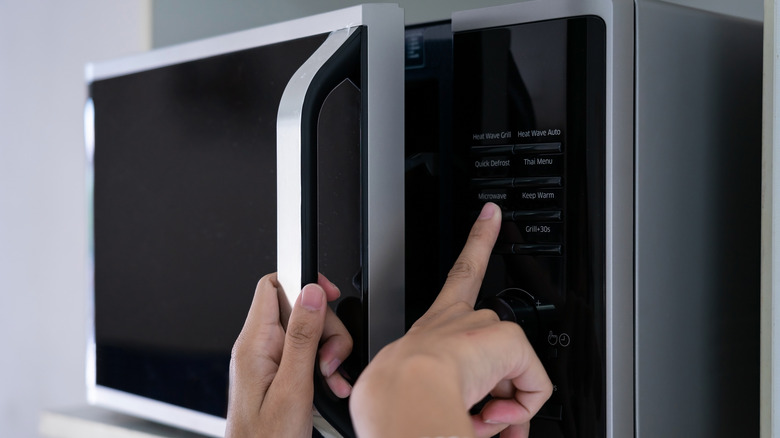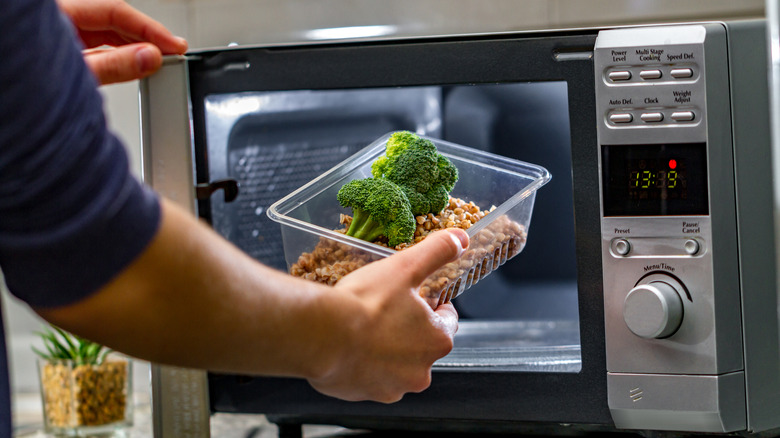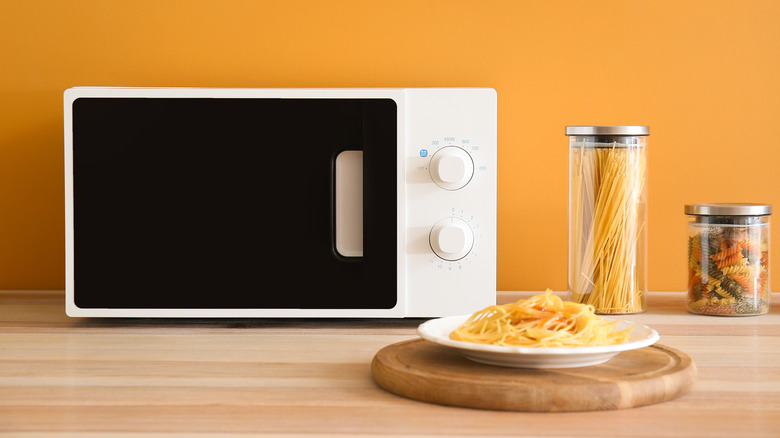Mistakes Everyone Makes With Their Microwaves
According to Quartz, it is estimated that 90% of American households own a microwave. That being said, many people either opt not to use it or get frustrated with them really easily. There are some very valid concerns about the benefits of microwaving food, such as improper ventilation or radiation, food not heating up evenly, and the nutritional value of food after it is cooked, notes How Stuff Works.
However, WebMD states that there is no need to be scared of microwave radiation as it is non-ionizing. Microwaves use a type of electromagnetic radiation, which doesn't alter the chemical makeup of your food nor is it harmful to our bodies. Furthermore, according to Choice, most of the issues that users have with their microwave are likely due to user errors; there is a lot about the typical household microwave that people don't know, such as which power levels to use, how to change the settings, and what type of containers work best.
Use the power button
One of the biggest complaints people have about their microwave is that it heats their food unevenly. Often, however, this isn't due to the machine's wattage or the cooking time — at least not entirely — it is more likely to be the power setting that you have it on. As Choice points out, most people just pop their food in the microwave and press start.
The main issue with this is that most microwaves will default to their highest power setting. While the bowl and top of your food will get hot really quickly, the inside will still be cold, notes Choice. Instead, opt for one of the lower settings on a longer cook time. While this means an extra couple of minutes waiting for your food to heat up, the low and slow method will ensure food is heated through entirely. In addition, the low-power setting is also great for quickly softening something like butter or ice cream without melting it.
Common safety hazards
Another concern people have with their microwaves relates to food safety. While radiation is not a genuine concern, there are quite a few other potentially hazardous mistakes people make. Many people reheat their leftovers by simply putting whatever container they're in straight into the microwave, but this can be a major medical concern, warns Choice. Plastics and styrofoams that aren't heat-safe can release toxic chemicals into your food. Even containers that are labeled as microwave safe often only refer to reheating, not long cook times. To be safe, it is recommended that you only reheat your food in a ceramic or glass dish, and avoid items like foil, metal, or paper.
People also tend to neglect their microwaves when it comes to cleaning. Microwaves can get really dirty with splashing sauces and various other food residues. While this is a slight health concern, it's also a functionality issue, as the microwave will try to cook leftover food scraps along with your meal. To prevent this, always clean up spills immediately, and deep clean every now and then by microwaving lemon slices in a bowl of water and using a towel to clean up any leftover residue.


